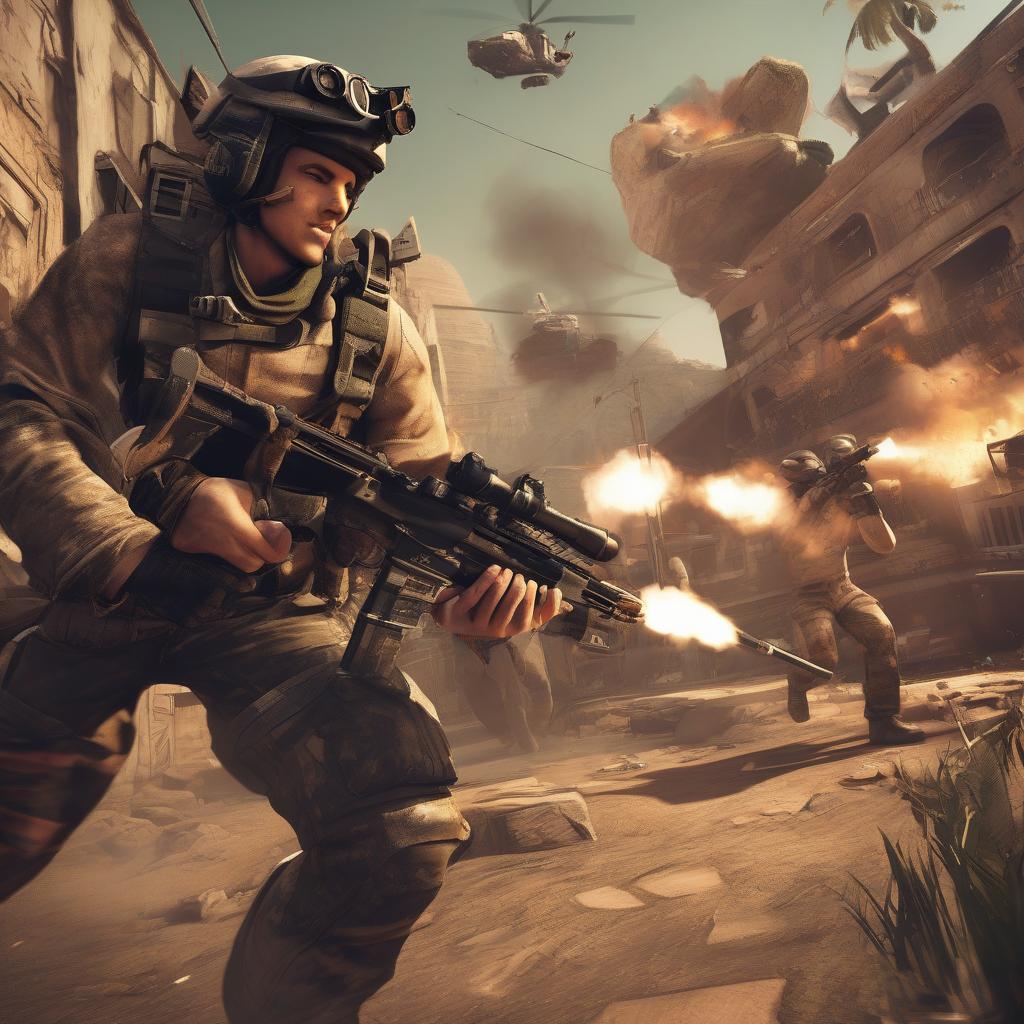Ever found yourself lost in the immersive world of FPS games, where the screen is your eyes and the keyboard your weapon? First-Person Shooters (FPS) have been around for decades, and they just keep getting better and more engaging. From the pioneering days of Doom and Wolfenstein 3D to the latest releases that push the boundaries of graphics and gameplay, FPS games have evolved dramatically. But what makes FPS games so compelling, and why do players keep coming back for more?
The Evolution of FPS Games
FPS games have come a long way since their inception. Back in the day, it was all about simple graphics and straightforward gameplay. The core of these games was shooting enemies from a first-person perspective, but the technology back then was limited. As years rolled by, the genre began to see significant advancements.
Early Days
Let’s take a trip down memory lane. Wolfenstein 3D and Doom were among the first games to introduce players to the FPS genre. They laid the groundwork with their simple yet addictive mechanics. Players were thrilled to explore labyrinthine levels, shooting enemies while trying to find keys to unlock doors. Even back then, the sense of immersion was palpable.
The Graphics Leap
Fast forward to the late ’90s and 2000s, when graphics saw a massive overhaul. Games like Half-Life and Counter-Strike brought storytelling and tactical gameplay into the mix, adding depth to the genre. Players weren’t just shooting mindlessly anymore; they were strategizing, working in teams, and even engaging in narratives that made each mission meaningful.
The Modern Era
Today, with advanced graphics engines and realistic physics, FPS games transport players to hyper-realistic battlefields. Think Call of Duty or Battlefield. The detail in these games is mind-boggling—from the texture of the terrain to the sound of bullets whizzing past. It’s an immersive experience that’s hard to beat.
Components of a Great FPS
What exactly makes an FPS game great? Is it the story, the graphics, or maybe the multiplayer mode? A little bit of everything, I’d say.
Engaging Storylines
While not all FPS games focus on storytelling, those that do often leave a lasting impact. Take Bioshock, for example. The storyline is as compelling as the gameplay, drawing players into a dystopian world with rich lore and complex characters. It’s not just about shooting; it’s about surviving and uncovering mysteries.
Multiplayer Madness
Multiplayer modes have become a cornerstone for many FPS games. Games like Apex Legends and Valorant thrive on their competitive multiplayer arenas. Players from all over the globe compete, communicate, and sometimes collide in these virtual battlegrounds. The thrill of outsmarting human opponents adds a layer of unpredictability that few other game genres can match.
Innovative Mechanics
Innovation is key to keeping the genre fresh. Whether it’s the introduction of parkour elements in Titanfall or the portal mechanics in Portal (which, yes, can be considered a FPS with a unique twist), these games continuously introduce mechanics that keep players on their toes.
The Role of Technology
Technology? It’s the backbone of everything. From the development of advanced gaming engines to the rise of virtual reality, technology has always played a crucial role in how FPS games are experienced.
VR and AR in FPS
Virtual Reality (VR) is changing how we interact with FPS games. With devices like the Oculus Rift and HTC Vive, players can dive deeper into games, feeling like they’re part of the action. Augmented Reality (AR) has also started to make its mark, although it’s still in its nascent stages within the FPS genre.
Cloud Gaming and FPS
With the advent of cloud gaming platforms, the accessibility of high-end FPS games has skyrocketed. Services like NVIDIA’s GeForce Now and Google Stadia allow players to stream their favorite FPS titles on devices that wouldn’t normally support such demanding games. This shift is reshaping how and where players engage with FPS games. If you’re curious about how cloud technology is impacting the gaming world, particularly FPS titles, check out this insightful article on cloud gaming and FPS.
Community and Culture
FPS games aren’t just about the gameplay; they’re about the community. Streaming platforms like Twitch have created spaces where players can share their experiences, strategies, and sometimes, their frustrations.
Esports and Competitions
Esports has blown up in recent years. Titles like Counter-Strike: Global Offensive and Overwatch have massive competitive scenes. Players train for hours, honing their skills for tournaments that offer substantial rewards. It’s not just about the money, though; it’s about the thrill, the fame, and the community recognition.
| Game | Tournament Prize Pool (Approx.) |
|---|---|
| Counter-Strike: Global Offensive | $1,000,000+ |
| Overwatch League | $5,000,000+ |
Modding and Customization
Let’s talk modding. Many FPS games, like Garry’s Mod, allow players to create their own content, from maps to new gameplay elements. It’s a creative outlet that enhances the replayability of these games, allowing communities to mold games into something they love.
Why We Love FPS Games
At the end of the day, why do we keep coming back to FPS games? Maybe it’s the thrill of the hunt or the satisfaction of a well-placed shot. Perhaps it’s the social aspect or the adrenaline rush of a close match. Everyone has their reasons, and maybe that’s what makes FPS games so timeless.
So, next time you boot up your favorite FPS, take a moment to appreciate the intricate components that make it what it is. From the graphics to the story, it all comes together to create a unique experience. And who knows? With technology advancing at a breakneck pace, the best FPS experiences might just be around the corner.
FAQs
- What’s the difference between FPS and TPS games?
FPS stands for First-Person Shooter, where you see through the character’s eyes. TPS, or Third-Person Shooter, gives you a view from behind the character. - Are FPS games suitable for kids?
It depends on the game. Many have age restrictions due to violence, so always check the game’s rating. - Can FPS games improve cognitive skills?
Some research suggests they can enhance spatial awareness and reaction times. But like anything, moderation is key. - What’s the best platform for FPS gaming?
It varies. PCs offer better graphics and customization, but consoles provide a more relaxed experience. Personal preference plays a huge role. - How do professional gamers get so good at FPS games?
Practice, strategy, and sometimes sheer talent. Many professionals dedicate hours daily to honing their skills.
And there you have it—a look into the world of FPS games. It’s a genre that’s constantly evolving, always keeping us on our toes. So, whether you’re a seasoned veteran or a curious newcomer, there’s always something new to discover in the FPS universe.


